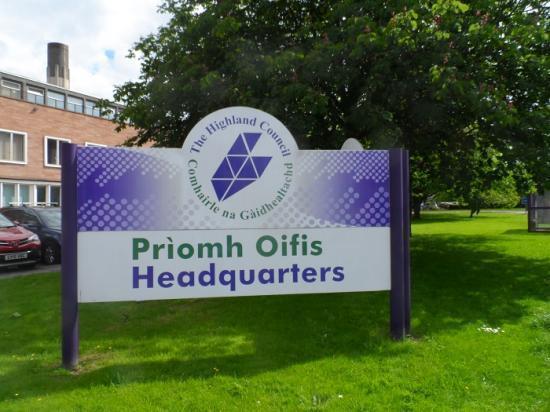Highland Council demonstrates improving performance
7th March 2019

Overall the Council's key performance indicators (KPIs) for 2017-18 are performing well with 81% (22) either improving or being maintained.
The principles that underpin the Council's values include that the Council will be fair, open and accountable. This means the Council will measure performance, report on it publicly and listen to communities, to ensure the Council is delivering services that provide best value for our citizens.
An annual report to Council provides information on the outcome of local and nationally benchmarked Statutory Performance Indicators (SPIs) for 2017/18. The report shows improved performance by 5% or more in 2017/18 on 38 indicators, with 29 indicators showing a decline of 5% or more in performance.
Overall, 102 (78%) of SPIs improved by 5% or more or performance was maintained compared to 77% the previous year. The report also shows that for the 80 indicators which are also nationally benchmarked there are 10 in the top quartile and 19 in the bottom quartile.
Leader of the Council Margaret Davidson thanked staff for the continued improvement. She said: "At a time of increasing financial pressure and simultaneous increasing demand this is a fair performance. However, the Council must be honest about areas where performance is not good enough and identify ways to do things differently and better. This is the basis on which the Council's budget for 2019/20 onwards has been built and will be supported through a strategic performance framework moving forwards.
"One area where we know we can do better is supporting our looked after children to be cared for in the Highlands and to enable them to achieve their full potential at school and in life. I am hopeful that the measures being put in place this year will help us to better fulfil our corporate parenting responsibilities in the future."
In a separate report to Council on Improvement Priorities the Chief Executive outlines a review of performance management arrangements which will require a significant change in the culture for the organisation and this will include developing stretching targets to drive continuous improvement in performance. The review will consider the best approaches and tools to drive continuous improvement across the organisation and this extends beyond corporate performance reporting. The planned review also links to a further report to Council on the Council's Change Programme.
The Council’s Corporate Plan sets out the strategic and operational priorities of the organisation along with the improvement priorities from the Change Programme and the Council Programme. The plan also sets out the measures and actions required to deliver and monitor the Council’s priorities for 2019-2022. The plan will be supported by a Highland Improving Performance Programme (HIPP) which sets out an approach to developing a framework for driving performance improvement consistently and robustly across the Council. Together, this approach will ensure the Council achieves its ambitions, delivers these in a sustainable way and improves performance across the organisation.
Chief Executive Donna Manson also said: "I am ambitious that we are a high performing council, and a performance framework which sets ambitious targets and regularly monitors our progress is fundamental to this. We have some great examples of high performing teams and best practice which can be shared and supported across our services. Let us build on success and challenge where things can be improved or made more efficient. This will enable us to be more sustainable into the future and to do the best for our communities."
Areas which show improvement by 10% or more between 2016/17 and 2017/18 include: Attainment (5+ awards at SCQF Level 5) by children from deprived
Backgrounds increased from 27% to 31%; The percentage of Looked After Children in kinship care increased from 17.7% to 19.5%; Cost of maintenance per street lighting unit decreased from £19.20 to £16.18 and Street lighting electricity consumption decreased from 16.6m kWh to 14.2m kWh; The number of businesses supported by the Economic Development service and Business Gateway increased from 1,061 to 1,191; The accident injury rate (reportable injuries/ No. employees *100,000) decreased from 244 to 145.
Areas where performance has decreased by 10% or more between 2016/17 and 2017/18 are: Attainment (5+ awards at SCQF Level 6) by children from deprived backgrounds decreased from 11% to 9% and School exclusion rates (per 1,000 pupils) for looked after children increased from 73.2 (2013-15) to 108.8 (2015-17); The average number of Looked After Children accommodated by the Council out with Highland increased from 27 (2016/17) to 34 (2017/18).
Also the cost of Environmental Health (per 1,000 population) increased from £14,878 to £16,940; The homelessness case duration increased from 37 to 44 weeks; The Percentage of unemployed people assisted back into work decreased from 6.0% to 4.9%.; The cost of Economic Development and Tourism services (per 1,000 population) increased from £29,416 to £40,777.
The full paper can be seen at item 11 of the agenda at https://www.highland.gov.uk/meetings/meeting/4093/highland_council/attachment/74980
Related Businesses
Related Articles
Council welcomes Visitor Levy flexibility plan
The Highland Council welcomes moves by the Scottish Government to introduce greater flexibility on how it could design a Visitor Levy Scheme for consultation. The Visitor Levy (Scotland) Act 2024 currently provides local authorities with discretionary powers to implement percentage-based levies following statutory consultation.Highland Council is reaching out for views to shape its next 26/27 budget.
As it looks to set out its forthcoming priorities, the council is seeking involvement from members of the public, including businesses, community groups, parents, and young people. All their opinions are going to be crucial in deciding how Highland Council will take on its budget challenge for 2026-2027.Have your say in Thurso's future £100million investment by attending public consultation events
Thurso is to benefit from £100m investment in education and community facilities and are rolling out the first phase of public consultations on 9 and 10 December 2025. The Highland Council is inviting people that live, work, or study in Thurso, to come along to the public consultation events to have their say; this is an opportunity to help shape the future of Thurso, to gather views and ideas.Finding new owners for empty homes - Scheme launched to help return more empty homes to active use
A new online portal has been launched to bring empty homeowners together with prospective buyers or developers with the aim of facilitating more properties to be used as homes again. Covering the whole of Scotland, this builds on the success of local pilots, referred to as "matchmaker schemes".Consideration for short term let control area in Skye and Raasay
Steps towards introducing a short term let control area have been considered by Highland Council's Isle of Skye and Raasay area committee. On Monday (1 December 2025) the committee heard evidence to justify the grounds for the introduction of a Short Term Let Control Area covering all or part of Skye and Raasay.Workforce North event spotlights Highland economy
EMPLOYERS and educators from across the Highlands have gathered to hear how a new initiative is aiming to transform the region's economy. Workforce North - A Call to Action brought together business leaders and teachers from primary and secondary schools from across the Highland Council area with a wide range of partners geared towards education, learning and skills development at Strathpeffer Pavillion.
Council calls for meaningful engagement from Home Office Over 300 Asylum Seekers Being Sent to Inverness
The Highland Council continues to call for meaningful engagement from the Home Office over its plans to temporarily accommodate up to 300 adult male asylum seekers at Cameron Barracks, Inverness. It follows an email on Monday from Alex Norris MP, Minister for Border Security and Asylum, to Council Leader, Raymond Bremner, which failed to answer questions raised by the Council or address community concerns.SSEN Transmission becomes first signatory to Highland Social Value Charter
SSEN Transmission has become the first company to sign up to the Highland Social Value Charter (HSVC), marking a significant milestone in delivering long-term socio-economic benefits for communities across the Highlands. Investment commitments from the company include funding for roads, new homes, jobs, and work for local contractors in addition to a local and regional fund for communities to apply to.Wick - Aberdeen PSO - Update issued 24/11/2025
The Highland Council continues to work through the procurement process for the provision of the Wick Public Service Obligation for the Highland Council. We have now entered the preferred bidder stage and have entered a standstill period.Highland Council winter road condition and school closure report for 25 November 2025
Maps of the Council's gritting routes by priority and policy are available online at www.highland.gov.uk/gritting (external link) The information provided is a summary of reports from operational staff and is intended to give a general indication of typical conditions in each area at a point in time. It is not intended to imply that any individual route is entirely snow and ice free and drivers must be aware that conditions can change rapidly and make their own assessment of conditions for travelling.
